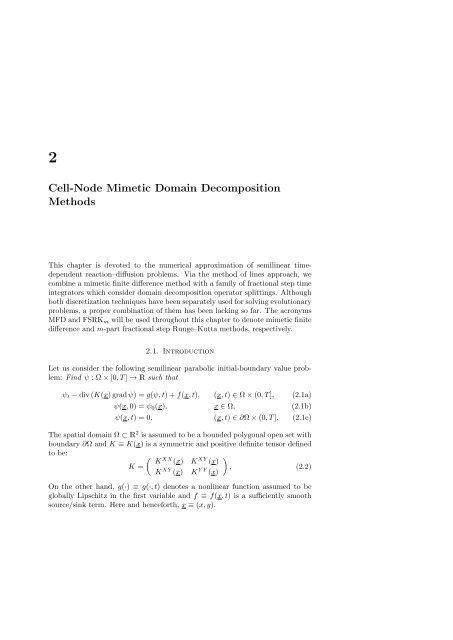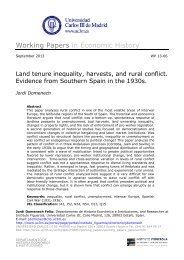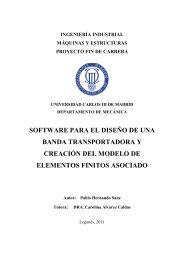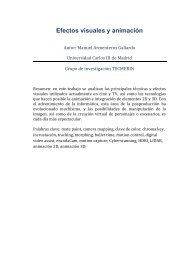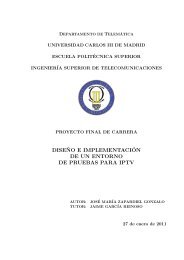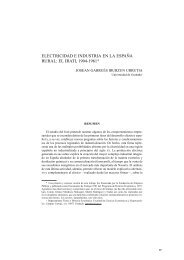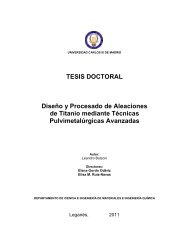Métodos miméticos de pasos fraccionarios - E-Archivo - Universidad ...
Métodos miméticos de pasos fraccionarios - E-Archivo - Universidad ...
Métodos miméticos de pasos fraccionarios - E-Archivo - Universidad ...
Create successful ePaper yourself
Turn your PDF publications into a flip-book with our unique Google optimized e-Paper software.
2<br />
Cell-No<strong>de</strong> Mimetic Domain Decomposition<br />
Methods<br />
This chapter is <strong>de</strong>voted to the numerical approximation of semilinear time<strong>de</strong>pen<strong>de</strong>nt<br />
reaction–diffusion problems. Via the method of lines approach, we<br />
combine a mimetic finite difference method with a family of fractional step time<br />
integrators which consi<strong>de</strong>r domain <strong>de</strong>composition operator splittings. Although<br />
both discretization techniques have been separately used for solving evolutionary<br />
problems, a proper combination of them has been lacking so far. The acronyms<br />
MFD and FSRKm will be used throughout this chapter to <strong>de</strong>note mimetic finite<br />
difference and m-part fractional step Runge–Kutta methods, respectively.<br />
2.1. Introduction<br />
Let us consi<strong>de</strong>r the following semilinear parabolic initial-boundary value problem:<br />
Find ψ : Ω × [0, T ] → R such that<br />
ψt − div (K(x) grad ψ) = g(ψ, t) + f(x, t), (x, t) ∈ Ω × (0, T ], (2.1a)<br />
ψ(x, 0) = ψ0(x), x ∈ Ω, (2.1b)<br />
ψ(x, t) = 0, (x, t) ∈ ∂Ω × (0, T ]. (2.1c)<br />
The spatial domain Ω ⊂ R 2 is assumed to be a boun<strong>de</strong>d polygonal open set with<br />
boundary ∂Ω and K ≡ K(x) is a symmetric and positive <strong>de</strong>finite tensor <strong>de</strong>fined<br />
to be:<br />
K =<br />
( K XX (x) K XY (x)<br />
K XY (x) K Y Y (x)<br />
)<br />
, (2.2)<br />
On the other hand, g(·) ≡ g(·, t) <strong>de</strong>notes a nonlinear function assumed to be<br />
globally Lipschitz in the first variable and f ≡ f(x, t) is a sufficiently smooth<br />
source/sink term. Here and henceforth, x ≡ (x, y).


